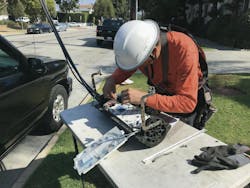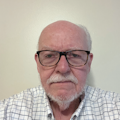Obstacles to Fiber Optic Workforce Training and Certification
In the national discussion about the need for more skilled fiber techs, many of those making the decisions are overlooking the subject of training/education for current and future fiber techs. Those people are part of our industry’s problems. Here are some comments I’ve heard. Do they sound familiar?
“When I talk to individuals in the fiber industry, they all tell me the same thing. They don't need splicing training; it gets taught in the field and there's really nothing to it!”
That quote was from a state broadband office person talking to a fiber instructor who was inquiring about providing workforce training programs for the projects funded by the BEAD money they were expecting. People who are unfamiliar with fiber optics don’t seem to think there is any skill required to be a fiber tech. It’s not the first state person we’ve heard saying something like this. The same state people were excited, however, about starting training for bucket truck operators—big trucks are much more fun!
There is a second problem here, too. “Splicers” are not fiber techs. Splicing is only part of the job of a fiber tech, but that old name from the copper days persists. Today’s fiber tech is expected to be familiar with installing cable (and not just “pulling” cable but using other installation methods like blowing cable), preparing cable for splicing, then splicing, neatly storing fibers in closures, handling the storage of closures and service loops, testing cables, and creating documentation. People unfamiliar with the actual jobs of fiber techs generally underestimate what the tech needs to learn.
“I can’t afford to send new hires to training first, I need them in the field now. They can learn from the experienced guys by on-the-job training (OJT).”
Well, there is a bit more truth to that. Many contractors do need installers right now. But just how productive will those workers be, and how much will it reduce the productivity of the experienced workers trying to train them in the field or fixing their mistakes? How long will it take them to learn all the aspects of the job described above? How many costly mistakes will they make as they learn? How much more productive would they be with proper training?
“I won’t send these guys for training and certification. They will just put that on their resumes to find jobs at higher pay.”
We won’t assume they are being underpaid now, we’ll assume the boss doesn’t understand how training affects productivity, engenders employee loyalty, or perhaps even qualifies them for better pay based on their improved work performance. Maybe they don’t realize they can write a contract that requires the worker pay back part of the cost of training and certification if they leave before a specified time period.
“My guys don’t need certification. They have been working in the field for years and know this job backwards and forwards.”
No doubt they have the skills to do their jobs in the field, but certification isn’t just about skills. Certification is first and foremost proof that an individual also has knowledge of the specific subject as well as the skills, and that knowledge is up to date. Certification is required by many jobs in many professions, often more important than college degrees. Some large employers, even those that don’t require certifications, reward employees who study and obtain new certifications. Many of the government-funded infrastructure projects, like BEAD, specifically require certified installers.
Those are consistently the top excuses for not training and certifying fiber techs I’ve heard in the four decades I’ve been involved in training fiber techs. Many people we hear saying these things don’t know the options available to them.
For new hires, the ideal learning method is to send them to a short fiber optic “boot camp” course that typically lasts a few days and costs about a week’s pay. In an intensive course like this, they will learn the basics of fiber optics and gain hands-on experience in handling cables, splicing, and terminating and testing. They won’t leave the course as experts, but they will be ready for OJT, ready to take the basics they have learned in the course and apply it to the work they will do in the field under supervision.
An alternative approach is to have the novices take an online course. FOA’s free Fiber U online learning site has a “Basic Fiber Optics” course that provides the knowledge they need to understand their job tasks, and the “Basic Skills Labs” online course introduces them to the hands-on work with “virtual hands-on” lessons.
Certification is also easier than it sounds. Training classes, for example at an FOA approved school, will include certification, but are not the only way to get certified. Certifying bodies like FOA who follow the international standard for certifying bodies, ISO 17024, will offer certification without having to take a training course if the applicant has sufficient field experience.
The FOA Direct Certification program requires field experience and passing an online certification exam. FOA provides an online study program for the certifications at Fiber U so applicants can have a structured study program for the reference materials used in the certification exam.
Two recent graduates of the FOA Direct Program recently discussed their experiences in a YouTube video. One commented "Even if you have been in the industry for 5 to 7 years, you are going to learn a lot of things."
Certification is an individual achievement, tied to the person achieving it. Current fiber techs wanting certification can study and apply on their own. Employers should encourage them to do that, and many not only encourage it but pick up the tab, knowing that they, as well as the employee, will benefit from it.
About the Author
Jim Hayes
Fiber Optic Expert
Jim Hayes is the Fiber Optic Expert columnist for ISE Magazine. He is a lifelong techie who has been involved in the fiber optic industry since the late 1970s. He founded one of the world's first fiber optic test equipment companies, FOTEC, which was acquired by Fluke in 2000, and he was a co-founder of the Fiber Optic Association (FOA), the international professional society of fiber optics, in 1995.
Jim is a writer and trainer and the President of FOA. He is the author of nine books on fiber optics and cabling and writes for several magazines.
Jim and his wife, Karen, who is the GM of the FOA, have traveled the world for the FOA helping set up schools to train the workers who design, build, and operate today's communications networks. The FOA offers nearly 1,000 pages of online technical materials, over 100 videos, and two dozen free self-study courses online.
For more information, email [email protected] or visit www.jimhayes.com.
To learn more about The Fiber Optic Association, visit www.thefoa.org. Follow them on Facebook: FiberOpticAssociation, LinkedIn: company/the-fiber-optic-association-inc-foa, and YouTube: user/thefoainc.





